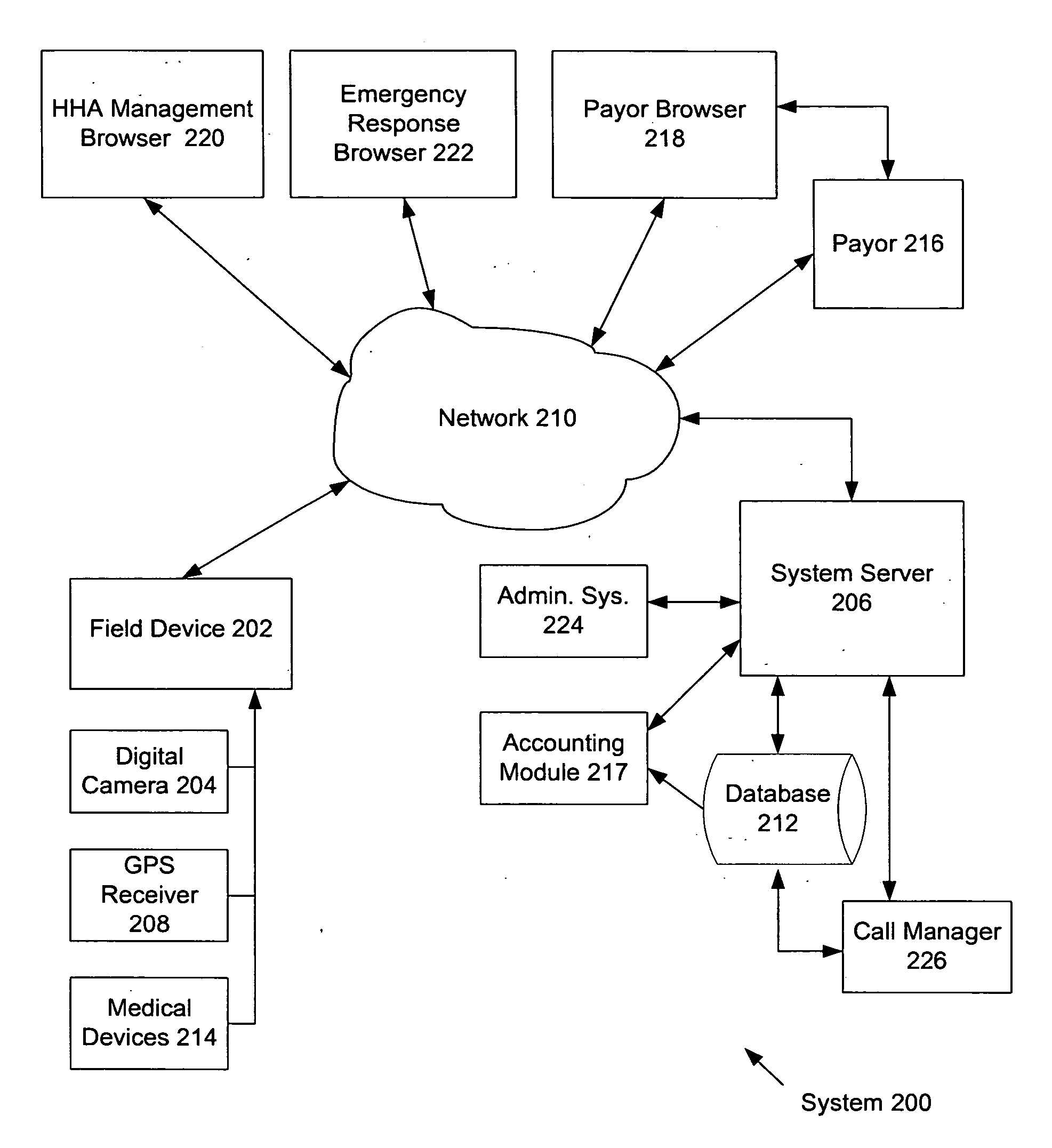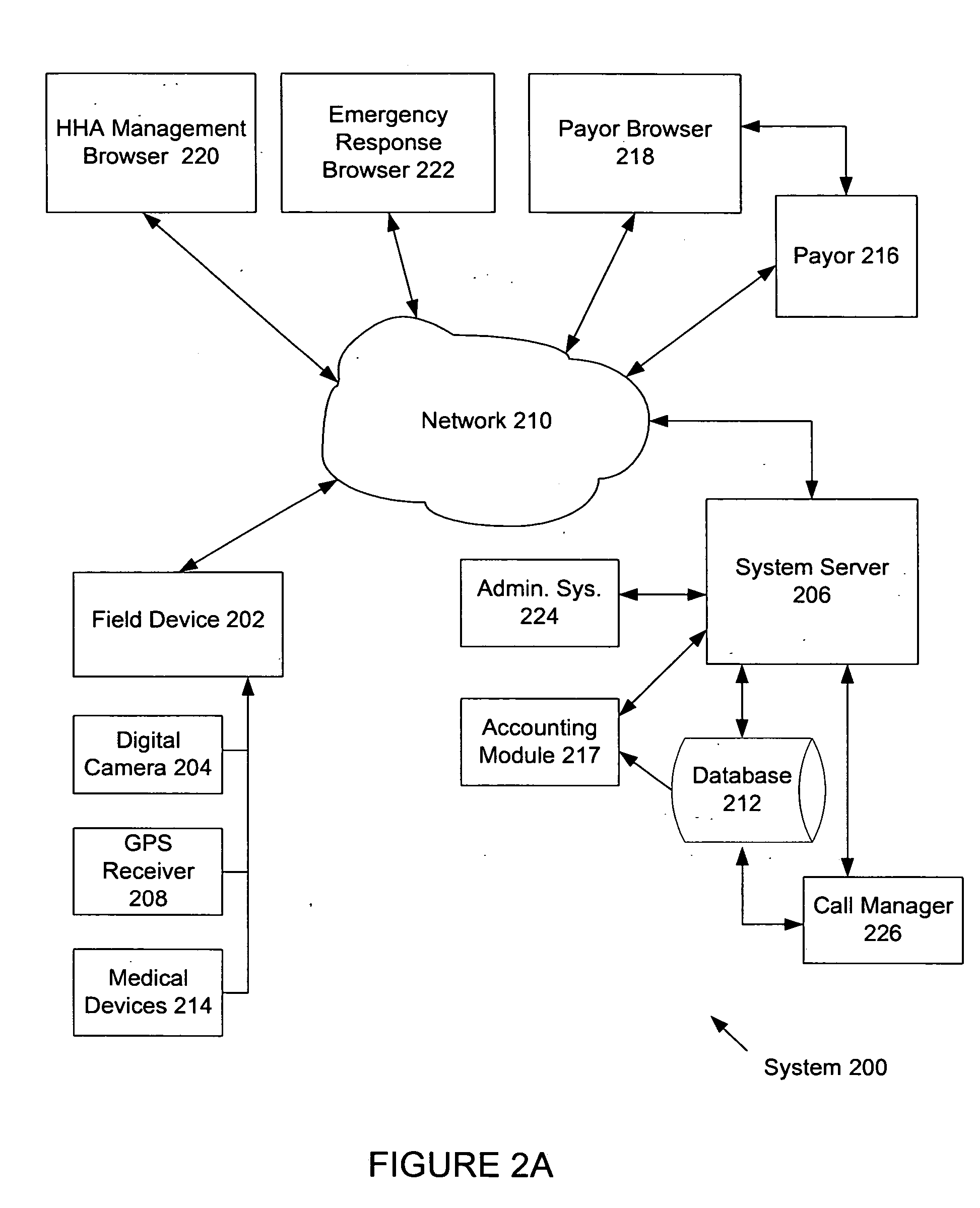Management tool for health care provider services
a technology for managing tools and health care providers, applied in the direction of instruments, navigation instruments, electric signalling details, etc., can solve the problems of serious chronic illnesses, a large health problem, and difficulty in quickly assessing the risk of each special needs patient, so as to improve the consistency and reliability of such services
- Summary
- Abstract
- Description
- Claims
- Application Information
AI Technical Summary
Benefits of technology
Problems solved by technology
Method used
Image
Examples
Embodiment Construction
[0059] In the description herein for embodiments of the present invention, numerous specific details are provided, such as examples of components and / or methods, to provide a thorough understanding of embodiments of the present invention. One skilled in the relevant art will recognize, however, that an embodiment of the invention can be practiced without one or more of the specific details, or with other apparatus, systems, assemblies, methods, components, materials, parts, and / or the like. In other instances, well-known structures, materials, or operations are not specifically shown or described in detail to avoid obscuring aspects of embodiments of the present invention.
[0060] Referring now to the drawings more particularly by reference numbers, a simplified embodiment of a representative healthcare control system 200 for supporting an caregiver is shown in FIGS. 2A and 2B. It is to be understood that a system capable of meeting the requirements of the present invention will depe...
PUM
 Login to View More
Login to View More Abstract
Description
Claims
Application Information
 Login to View More
Login to View More - R&D
- Intellectual Property
- Life Sciences
- Materials
- Tech Scout
- Unparalleled Data Quality
- Higher Quality Content
- 60% Fewer Hallucinations
Browse by: Latest US Patents, China's latest patents, Technical Efficacy Thesaurus, Application Domain, Technology Topic, Popular Technical Reports.
© 2025 PatSnap. All rights reserved.Legal|Privacy policy|Modern Slavery Act Transparency Statement|Sitemap|About US| Contact US: help@patsnap.com



